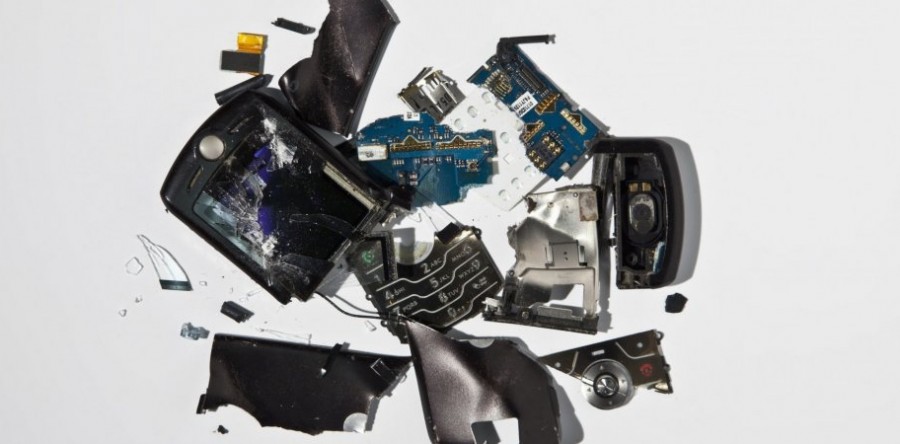Meet the $250 Million Startup That Wants to End Customer Service Calls for Good
LivePerson's Web chat lets companies reach out to their customers online.
By Liz Welch, February 2015 <Article Source>
When Robert LoCascio started surfing the internet back in 1993, he thought, "This is awesome--but where are the people?" They were chatting in forums with one another, but there was no connection between consumers and companies that were selling things or services online; 800 numbers owned that role. LoCascio thought that offering companies a chat platform would let them better manage the relationship. Now, New York City-based LivePerson has revenue of $250 million and 1,000 employees in eight countries, giving heft to LoCascio's theory that no one wants to be put on hold. Here's LoCascio:
The Web's Next Wave
Everyone thought the internet digitized the relationship between brand and consumer. But when they communicate, it still goes offline to voice, and that's not the way the world is today. We're riding the internet's third wave. The first was organizing the world's information through search--i.e., Google. The second was connecting people with people, so Facebook. The third is how we connect with businesses.

LivePerson founder and CEO Robert LoCascio says he will miss making 1-800 calls as much as he misses his pager and his goatee.
My first idea, in 1995, was for companies to bring their customers together in a community. Chatrooms existed online, but the business application did not. Xerox was my first customer, and within a couple of months they said, "We don't want our customers talking to one another, because it's a bitch session." But Xerox liked the chat capability, and being able to connect with customers and do support online. LivePerson launched in 1997 focused entirely on that.
Our company went public in April 2000, and then the dot-com bubble burst. We had negative gross margins and $20 million in infrastructure. An Israeli firm was making better software with cheaper implementation, so we bought it in late 2000, restructured, and moved all our customers onto that platform and our tech operations to Israel. That saved the company.
When you're on a website, picking up the phone to make a call is a very disconnected experience. Back in the late '90s, you had to log off because of dial-up internet. Even today, 90 percent of interactions come through voice. A credit card or any bill has an 800 number to call. That equates to 270 billion phone calls every year. It dwarfs the number of Web interactions. That is changing.
We started in post-sales support, making sure the customer is satisfied. The room for real innovation is on the sales side. We put an open-chat button next to the shopping cart and found that some people still clicked on it with a customer support issue. So then we thought, "How can you know by their behavior on a website when people want to buy?" That's where we want the chat button to appear. In 2002, we launched proactive chat, which pops open a window.
Setting the Hook
We have invested a lot in a series of algorithms that look at each customer and his or her connection with each business. If someone has been idle on a webpage for two minutes, that doesn't necessarily mean the person wants to be engaged by an agent. There are so many more behavioral signs that need to be factored in, such as, "What's in her cart? Has she been here before?" She may do 20 different things before she buys, so we look at all of those layers and process the data in real time to determine who best to engage, and at what moment someone might want help. When users trigger certain things, they get invited to chat. Twenty-five percent of the time, we are able to turn that behavior into a sale. That took our business from $20 million to $100 million within five years. Seventy percent of our revenue today is in this program.
We get paid on a per-interaction basis. If we send an invitation and a consumer accepts and starts a conversation, that's an interaction. If it's sales, we get more, and service, we get less.
Going Mobile
In 2015, we added mobile messaging capabilities. Consumers have moved on. They're not using voice to communicate with friends and family--they're texting or messaging. I don't think Web chat will be around four or five years from now. Why would you go on a website and chat? Wouldn't you just message on a phone? Why can't we do that with business? In another five years, we can take calls out entirely and message instead.
Through mobile messaging, we can pinpoint algorithms toward ongoing relationships, including one that says, "Say happy birthday." Our algorithms for both Web and mobile can also tell us that the behavior of a certain customer shows he needs even more touch, or less touch, or a certain type of touch.
With voice, a customer calls in, the company representative handles it, and the customer leaves. With LivePerson, those interactions are all recorded and organized. So a business can see, "OK, I haven't interacted with this person in three months. I'll just say hello or make sure his service is working smoothly or suggest that he consider a new product based on past purchases." Let's say you have telecom service, and your bill is running up because you're traveling overseas. The company can reach out and message, "What's going on?" Consumers can be connected with the business at all times without ever having to be put on hold. Instead of calling my bank, I can send a message that says, "Hey, I'm having a problem with my credit card. Can you check it out and get back to me?" That changes the interaction from a transaction to a connected experience.
Business in Your Pocket
When we first went live, we saw that when agents didn't manage their chats well, we'd get cancellations. How do you measure the relationship between the brand, the agent, and the consumer at all times? So we developed a "meaningful connection score." We patented it from our Web chat tools, then built it into the mobile messaging platform, and now train customers how best to use it.
Every month, an average of 30 million people chat with our 18,000 customers. During the holiday season, that number can go to 60 million. About 3 percent of that is going through messaging, but messaging is growing at 100 percent a quarter. Business can be in the consumer's pocket, and that's a radical shift.
Cutting Cords
Americans make more than a quarter trillion 1-800 calls a year and don't have a very good time of it. Letting go of the phone is not a hard call.
- 85% of callers are put on hold.
- 48% feel unhelped.
- 67% hang up.
- 49% would rather text than call a person.
- *Sources: Forrester; Frost & Sullivan; Performics; Talkto; Hailo; LivePerson
... and in Britain, making a call is now the sixth-most-common reason for having a mobile phone, after sending and receiving texts, reading email, Web browsing, and using the alarm clock.




